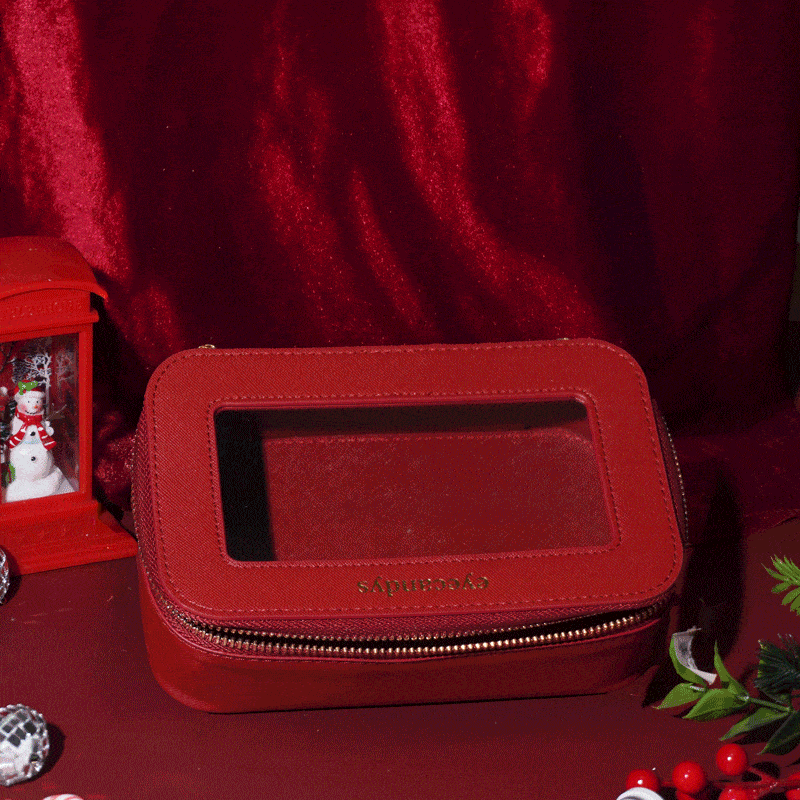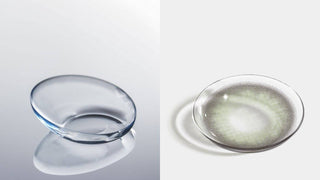The Ultimate Guide to Choosing Between Circle Lenses and Regular Lenses
Are you considering switching to circle lenses but are not sure where to start? You have come to the right place! This article is your ultimate guide to choosing between circle lenses and regular lenses. We will discuss the pros and cons of each type of lens, as well as the factors you need to consider when making your decision. We will also cover some important safety tips for wearing circle lenses and provide you with a list of popular circle lens brands and styles to choose from. By the end of this article, you will have all the information you need to make an informed decision about whether circle lenses are right for you.
Circle Lenses vs. Regular Lenses: An Overview
Have you ever wanted to change the appearance of your eyes? If so, you may have considered wearing circle lenses. Circle lenses are contact lenses that are larger than regular lenses, covering more of the iris. This can give your eyes a bigger, brighter appearance. Circle lenses are also available in a variety of colors, so you can choose a color that best suits your skin tone and eye color.
However, there are also some things to keep in mind before you decide to wear circle lenses. First, circle lenses can be more expensive than regular lenses. Second, circle lenses can be less comfortable to wear than regular lenses. Third, circle lenses can potentially cause eye damage if they are not worn properly.
With all of this in mind, it is important to weigh the pros and cons of circle lenses before you decide to wear them. If you are looking for a way to change the appearance of your eyes, circle lenses may be a good option for you. Just be sure to talk to your eye doctor first to make sure that circle lenses are right for you.
Advantages of Circle Lenses
Design and Style Variety: Circle lenses come in more designs and styles. They offer a wide range of options to suit different preferences and occasions.
Enhanced Eye Appearance: Circle lenses cover both the irises and the outer rims of your eye lenses, making your eyes appear larger and more vibrant.
Natural Color Blending: The color blends in more naturally with the normal appearance of your eyes.
Comfort and Durability: Circle lenses are comfortable and can be worn for up to a year without requiring periodic prescriptions.
Cost-Effective: In terms of price, circle lenses are often less expensive on a daily or yearly basis compared to regular lenses.
Advantages of Regular Lenses
Natural Look: Regular lenses give your eyes a more natural look, especially in terms of size.
Availability: Widely available both in brick-and-mortar and online retail stores.
All-Day Wear: Can be worn for the entire day without any problem.
Flexible Prescriptions: Require a doctor’s prescription, which can be obtained on a daily, monthly, or yearly basis, making usage extremely flexible.
Disadvantages of Circle Lenses
Limited Wear Time: Can only be worn for 6-8 hours a day.
Availability: It can be difficult to find these lenses in both online and brick-and-mortar retail stores.
Potential Eye Damage: If not purchased from a reputable source, there is a risk of buying lenses that do not meet industry standards, which can damage your vision.
Disadvantages of Regular Lenses
Less Dramatic Eye Enlargement: Do not give the illusion of larger eyes as effectively as circle lenses.
Limited Style Options: Come in fewer styles and the color change is not as pronounced.
Higher Cost: Typically more expensive than circle lenses.
Durability: Not as durable as circle lenses, necessitating more frequent replacements.
Factors to Consider When Choosing Circle Lenses
Before you pick out a pair of circle lenses, there are some key considerations you should keep in mind to ensure you make the best choice for your eyes and desired look.
1. Size of Your Eyes: The size of your eyes is one of the most important factors to consider. If you have small eyes, choose lenses that are not too large to avoid making your eyes look smaller. If you have large eyes, you can wear larger lenses, but avoid going too big as they may look unnatural.
2. Your Eye Color: Your eye color is another crucial factor. If you have light-colored eyes, you can wear almost any color of circle lenses. However, if you have dark-colored eyes, choose lenses that are lighter than your natural eye color to avoid making your eyes look smaller.
3. The Curvature of Your Eyes: The curvature of your eyes is also important. If you have flat eyes, choose lenses with a flatter base curve. If you have curved eyes, select lenses with a steeper base curve.
4. Your Lifestyle: Your lifestyle is another factor to consider. If you are active and play sports, choose durable lenses that can withstand wear and tear. If you work in a professional setting, opt for more natural-looking lenses.
5. Your Budget: Circle lenses can range in price from a few dollars to several hundred dollars. Set a budget before you start shopping to narrow down your choices.
Safety Tips for Wearing Circle Lenses
While circle lenses can be a safe and enjoyable way to change up your appearance, there are some important safety tips to keep in mind:
While circle lenses can be a safe and enjoyable way to change up your appearance, there are some important safety tips to keep in mind:
Buy from Reputable Sources: Ensure that you are getting high-quality lenses that are safe for your eyes.
Check Expiration Dates: Always check the expiration date on your circle lenses before using them.
Clean and Disinfect: Clean and disinfect your circle lenses before each use to remove any bacteria or debris.
Limit Wear Time: Never wear your circle lenses for longer than the recommended duration to prevent dry eyes, irritation, and potential cornea damage.
Avoid Sharing. Do not share your circle lenses with others to prevent spreading bacteria and infection.
Avoid During Infections: Avoid wearing circle lenses if you have any eye infections or injuries.
Stop If Discomfort Occurs: If you experience any pain, discomfort, or vision changes while wearing circle lenses, stop wearing them immediately and see your eye doctor.
Follow Doctor's Instructions: Be sure to follow the instructions provided by your eye doctor when wearing circle lenses.
Circle Lenses: Are They Worth It?
Whether or not circle lenses are worth it is a personal decision that depends on your individual needs and preferences. There are some definite advantages to wearing circle lenses, such as the ability to change the appearance of your eyes and make them look bigger and brighter. Circle lenses can also be a great way to correct vision problems, such as nearsightedness or farsightedness. However, there are also some potential drawbacks to consider, such as the cost of circle lenses, the potential for eye irritation, and the impact on your peripheral vision.
Cost
Circle lenses can be more expensive than regular lenses, especially if you are looking for high-quality lenses from a reputable brand. The cost of circle lenses can vary depending on the type of lens, the brand, and where you purchase them.
Replacement Frequency
Circle lenses typically need to be replaced more frequently than regular lenses. This is because they are larger in size and can cover more of the eye, making them more prone to damage. The replacement frequency can vary depending on the type of lens and the brand, but it is typically recommended to replace them every 2-3 months.
Potential for Eye Irritation
Circle lenses can potentially cause eye irritation, especially if they are not worn properly or if they are not made from high-quality materials. Symptoms of eye irritation from circle lenses include redness, dryness, itching, and burning. If you experience any of these symptoms, stop wearing the lenses and see your eye doctor.
Impact on Peripheral Vision
Circle lenses can potentially impact your peripheral vision, especially if they are too large for your eyes. The lenses can block some light from reaching the edges of your eyes. The impact on peripheral vision can vary depending on the size of the lenses and the shape of your eyes.
Ease of Insertion and Removal
Circle lenses can be more difficult to insert and remove than regular lenses, especially if you are new to wearing contact lenses. They are larger in size and can be more difficult to handle. It is important to learn how to insert and remove circle lenses properly to avoid damaging them or causing eye irritation.
Ultimately, the decision of whether or not to wear circle lenses is a personal one. If you are considering wearing circle lenses, it is important to talk to your eye doctor first to discuss the pros and cons and to make sure that they are right for you.
Popular Circle Lens Brands and Styles
EyeCandys: EyeCandys offers a wide range of natural-looking circle lenses designed for comfort and style. Curated to suit both Caucasian and Asian customers, their lenses come in various colors and patterns, perfect for everyday wear or special occasions.
O’lola: O’lola is celebrated for its vibrant and unique circle lens designs, particularly focusing on eye-enlarging styles tailored for the Japanese and Korean markets. They prioritize high-quality materials and innovative designs, making them a favorite choice for those looking to make a bold statement with their eye color.
i-DOL: i-DOL lenses are known for their exceptional comfort, realistic appearance, and are worn by beloved K-pop idols and celebrities. They offer subtle yet striking designs that enhance natural beauty, ideal for both casual and formal looks.
When choosing circle lenses, consider the following factors:
The Size of Your Eyes: Circle lenses should be about the same size as your iris. If they are too big, they can make your eyes look unnatural.
Your Eye Color: Circle lenses can be used to enhance your natural eye color or to change it completely. If you want to enhance your natural eye color, choose a lens that is a similar shade to your own eyes. If you want to change your eye color, you can choose any color you like.
Your Lifestyle: If you are active or wear a lot of makeup, choose circle lenses that are durable and easy to care for.
Your Budget: Circle lenses can range in price from a few dollars to over a hundred dollars. Set a budget before you start shopping for circle lenses.
Once you have considered these factors, you can start shopping for circle lenses. You can find circle lenses online, at beauty supply stores, and at some optical stores. Be sure to read the reviews before you purchase circle lenses to make sure that you are getting a quality product.
Considering the above differences between circle and regular contacts, you should now have a better idea as to which type of lens is best suited to your needs and personal circumstances. Do you want your eyes to look bigger or not? Do you prefer vivid eye color over more subtle tones? How much can you afford to spend on colored lenses? Your answers to these questions will determine which type of lens you should get. By following the information and tips provided in this guide, you can make an informed decision and find the perfect lenses for your eyes.
For more on colored contact lenses, explore these helpful articles:
-
How Long Do Colored Contacts Last to understand their lifespan and care
-
How Do Colored Contacts Work for a look at their design and function
-
Types of Cosmetic and Corrective Lenses to explore the variety available for both style and vision needs.







